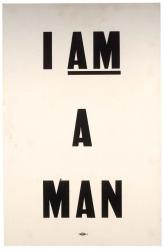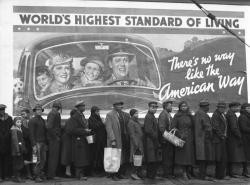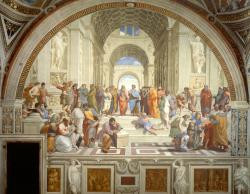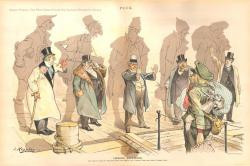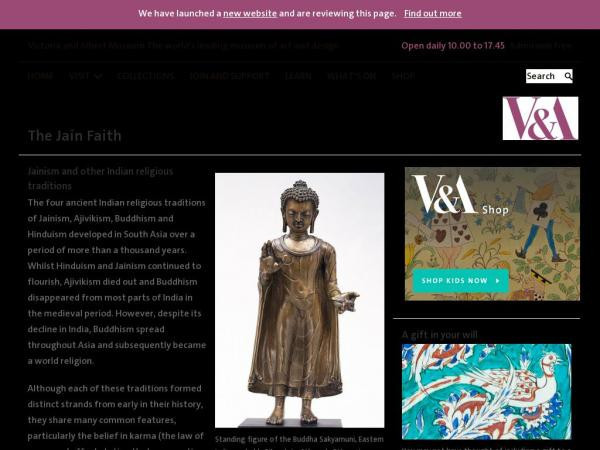Kate Harris
Social Studies teacher
Pittsburgh CAPA
Middle School (13 to 15 years old), High School (16 to 18 years old)
Teacher/Educator
Language Arts And English, Civics, Literature, Cultures, Economics, Social Studies, Geography, Writing, US History, Arts, Other
I'm a history-lover, art fan, and bookworm. I taught high school history (U.S. History and World Religions) for ten years in North Carolina, teach currently in Pittsburgh, PA, and am working to help teachers make the most of this new resource!
Kate Harris's collections
History of Mormons in America
<p>This collection of artifacts, photographs, texts, and historical markers is intended to help students explore the history of the Mormon religion in America. </p><p>Each of these items is intended to spark inquiry, following the process below: </p><ol><li>Students should choose one artifact on which to focus. </li><li>Have them use the artifact analysis PDF (last resource) to begin their study of the artifact. </li><li>Next, have students generate questions about the artifact? What do they wonder about? What does it tell them about the Mormon religion or its history within the United States? </li><li>Have students complete some general research on their artifact that will help their classmates piece together the story of the Mormon experience.</li></ol><p>As a collaborative project, students should use the PBS Forced Migrations map/timeline as a model for a class map/timeline of their own. </p><ol><li>Project an image of the map on a class whiteboard or create your own basic outline using large paper. </li><li>Have each student present their research findings. The main questions they should answer are: What does it represent about the Mormon experience? Where would the artifact they chose be placed (geographically and in terms of chronology)? </li><li>Students should then place place their image on the map with significant dates noted. </li><li>After all groups have presented, review the narrative of the Mormon experience with the class. What would they identify as critical moments in Mormon history? What questions do they still have?</li></ol><div>Tags: religion, Moroni, Joseph Smith, Brigham Young, Mormon, New York, Utah, Illinois, gold plates, inquiry</div>
 Kate Harris
Kate Harris
18
How a Bill becomes a Law
<p>How can ideas become legislation? This student activity reviews the process of how a bill becomes a law. Students may choose from two videos to watch, and then can read through the collection and investigate the resources. They may want to take notes on the process. Finally, a sorting activity assesses whether or not students truly understand the process of creating new legislation in the United States.</p>
 Kate Harris
Kate Harris
12
How Did Artists View the Civil War? A Collection using a Visible Thinking Strategy
This collection uses a visible thinking strategy called "See-Think-Wonder" from Harvard's Project Zero to help students analyze a Civil-War era sketch to determine context and perspective. After completing the routine, students will learn more about the image and the artist who made it, as well as view art representing a very different point of view.
For more on this strategy, see the "Notes to Other Users."
 Kate Harris
Kate Harris
8
How Siddhartha Became the Buddha
<p>This collection teaches students about the biography of Siddhartha Guatama and asks them to analyze images depicting stages of his life. Students will also learn about the different mudras, or hand gestures, that the Buddha makes. Quiz questions and hot spots are embedded throughout to check for understanding and support learning. </p><p>Tags: Siddhartha, Buddha, Buddhism, reincarnation, religion, India</p>
 Kate Harris
Kate Harris
12
How We Vote
<p>This collection invites users to explore how Americans have voted throughout our history and the innovations that have improved the voting process. Students will closely investigate images from the 19th and 20th century in order to determine potential flaws and improvements in the democratic process. Links to websites for additional reading are included as well as assessments and a possible extension activity. </p><p>Guiding questions:</p><p>-How has the process of voting changed in the last two centuries? Consider who, what, when, where, why, and how when answering this question.</p><p>-How have technological changes enhanced voting? What challenges remain?</p><p>Tags: civics, elections, campaigns, vote, ballot, ballot box, democracy, electoral process, change over time, cause effect</p>
 Kate Harris
Kate Harris
11
I Am a Man--We Are Human
This collection traces how a powerful phrase and its variations have been adopted by different voices in United States history.
Questions to consider:
-How is the phrase (and/or design of the original poster) used? How do the changes and adaptations it has undergone reflect different time periods and issues in United States history?
-Why has the phrase "I am a Man" had such staying power? Alternately, why has "We Are Human" been adopted?
-How do the above phrases reflect or reject concepts like "separateness," "personal identity," or "inclusion"?
-Why do you think many artists are drawn to the phrase and design? Do you think the artists expect viewers to recognize the influence of the original work? Why or why not?
-Why is the verb underlined? How would it change if another word were emphasized?
-What other examples could be included in this collection? This collection focuses primarily on visual interpretations of the phrase. Can you think of literary or pop culture examples?
Tags: Ernest Withers, Dread Scott, Ferguson, Abolition, Sojourner Truth, Memphis, sanitation workers, immigration reform, refugee crisis, Hank Willis Thomas, protest, sign, placard, broadside, civil rights
 Kate Harris
Kate Harris
9
Investigating a Place: North Carolina
What defines a place? This teacher's guide uses stamps, photographs, paintings, objects, videos, and music to explore the history and culture of North Carolina. In the classroom, these resources can be used by students to investigate two essential questions: How do you define North Carolina as a place? What does it mean to be from North Carolina?
Further questions include:
How do these objects relate to each other? What objects/people/places are missing that you think are important in defining North Carolina as a place? What sub-themes can you identify within this collection of resources? How do you define North Carolina in terms of its environmental characteristics? What are its unique set of physical and cultural conditions? Has the definition of being from North Carolina changed over time?
Activity Idea:
Ask students to investigate collection in small groups to answer the two essential questions. Use the supporting questions to guide their inquiry into the essential questions - answering these questions will give students a knowledge and evidence base from which to answer the essential questions.
To further the activity, students may choose one resource to investigate in depth and either write an essay or create a collection of their own around it. Students may choose two or more resources to compare in their exploration of how one defines North Carolina.
Ask students individually or in small groups to create a collection in Learning Lab to represent the physical and cultural characteristics of another place. Using these collections, ask students to write summary statements describing the unique human and physical characteristics of places researched. In class discuss student collections and what makes each place unique.
 Kate Harris
Kate Harris
44
Investigating a Place: The Pacific Northwest
<p>What defines a place? Is it its people? Economic life? Physical characteristics?</p><p>Examine this collection of images from or about the Pacific Northwest (loosely defined as Washington and Oregon states and British Columbia) to answer these questions: What are its unique set of physical and cultural conditions? How do these physical and cultural conditions interact? How does the economy of the PNW connect to its culture and geography? What are the consequences of human activity on the cultural and physical landscape? </p><p>Ask students individually or in small groups to create a collection in Learning Lab to represent the physical and cultural characteristics of another place (city, region, state). Using these collections, ask students to write summary statements describing the unique human and physical characteristics of places researched. Discuss student collections and what makes each place unique.</p><p>Tags: Portland, Seattle, Oregon, Washington, Vancouver, Native Americans, American Indians, grunge, space needle</p>
 Kate Harris
Kate Harris
38
Jainism
<p>This is a topical collection of resources related to Jainism. It includes sculptures, manuscripts, and paintings from the Smithsonian Institution's collection as well as links to outside web resources for further background information. Some questions to guide thinking are embedded throughout. </p><p>As they explore the collection, users might consider how Jain art and architecture reflect the main beliefs of the religion.</p><p>tags: ancient, India, religion, Jain, tirthankara, Mahavira, faith, Digambara, Svetambara</p>
 Kate Harris
Kate Harris
12
Look for the Helpers: Analyzing Social Movements
<p>Mr. Rogers is quoted as saying, “When I was a boy and I would see scary things in the news, my mother would say to me, "Look for the helpers. You will always find people who are helping." This collection will give students a framework to "look for the helpers"--the people who are trying to change society for the better during difficult times. Students will be introduced to a variety of strategies and tactics used in social movements, and consider how these might apply to an area of their own interest.</p><p>Included is a chart listing possible strategies for social movements that encourages students to find examples of tactics/strategies from the collection and determine the goals of each.</p><p>Opportunities for extension include:</p><p>Identify a social movement that relies on more than one strategy (most do). Can you create a "recipe" listing the various tactics used to create a successful movement?</p><p>Who is involved? Choose one of the examples from above to study further. Who was involved in that particular tactic or strategy? Consider different occupations (teacher, writer, church leader, student, mother) and also different demographics (gender, race, age, ethnicity, etc.)</p><p>What's missing? Are there strategies that you have encountered in your research that don't fit into this chart?</p>
 Kate Harris
Kate Harris
31
Modern Migrations
This collection offers teaching resources that provide context for today's modern refugee crisis and the ethical and political questions raised by the migration of so many people at this time. <br /><br />
The resources in this collection ask students to consider what it means to migrate, the choice (or lack thereof) that is involved in moving from one place to another, and how the word "migrant" differs from "refugee." As students examine different examples or objects in this collection, ask them to consider the reasons behind the migration and how these particular migrants are percieved. Suggested questions for discussion are embedded on the information tabs throughout. <br /><br />
 Kate Harris
Kate Harris
12
My Favorite Things
<p>In 2014-2015, artist and illustrator Maira Kalman created a personal collection that was displayed at the Cooper Hewitt, Smithsonian Design Museum. Her collection drew from across the Smithsonian museums and reflected a life story. Her inspiration and thinking is shared in the video resource that begins this collection, and some of the objects that she included (or similar ones) are shared.</p><p>Can you create your own collection of "favorite things"? What story would it tell? What people, places, and objects would it connect to? What emotions would it evoke?</p><p>tags: design, art, activity, personal, inspiration, creativity, biography</p>
 Kate Harris
Kate Harris
6




